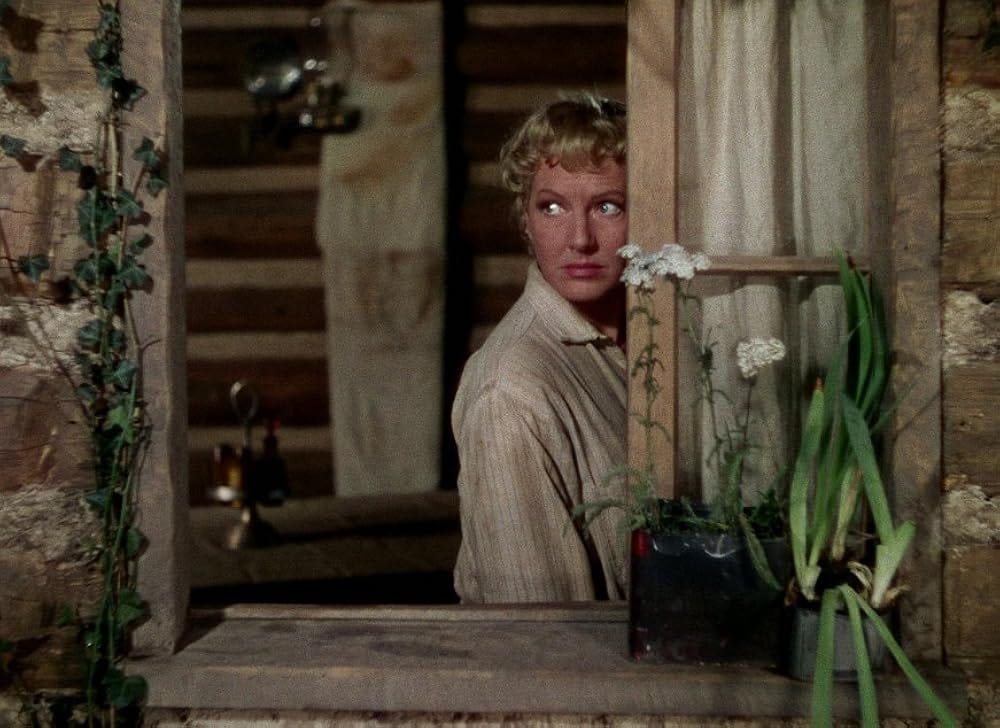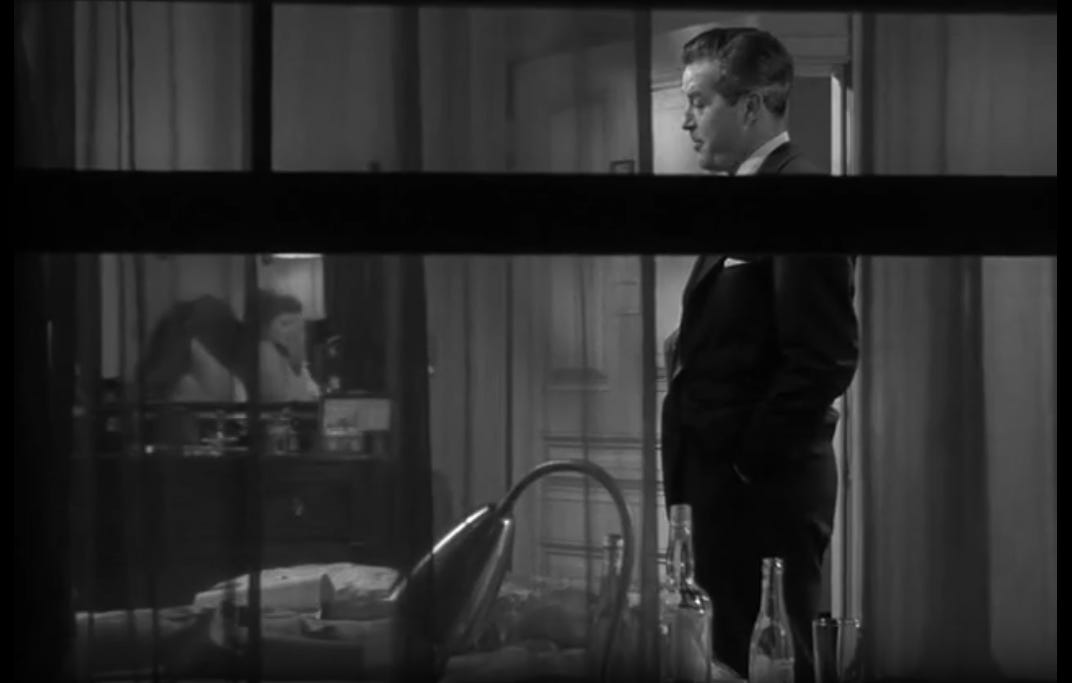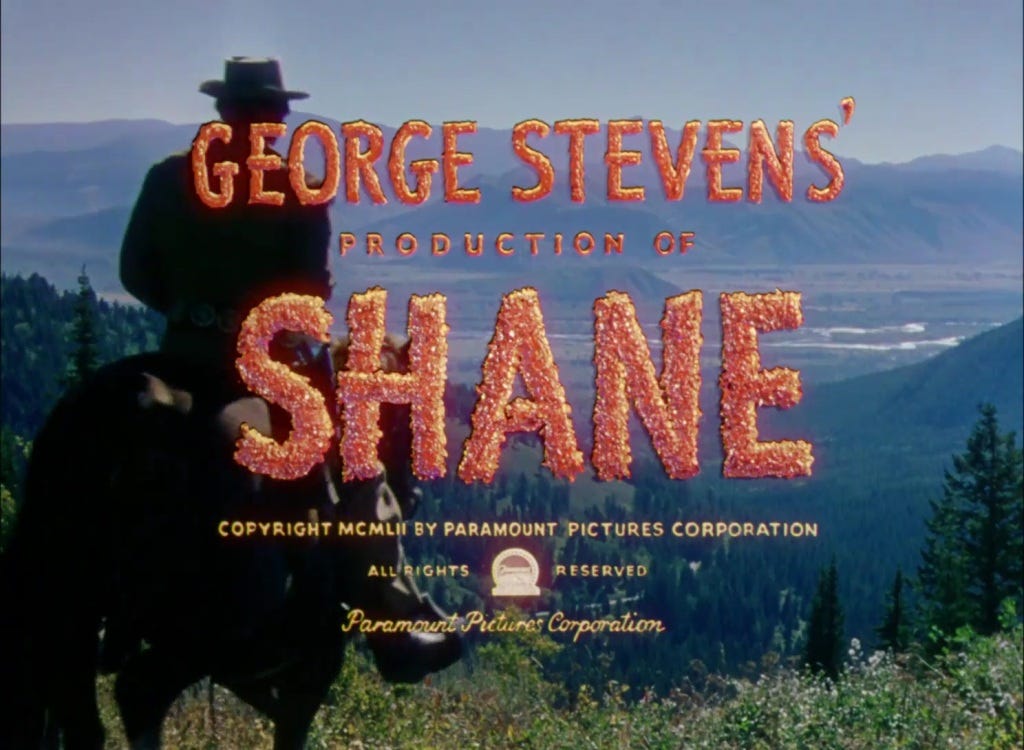
Fred Zinnemann liked to tell a story about how George Stevens once got a visit on the film set from a studio representative or producer. While the producer was there Stevens did not say anything, he just sat silent until the producer left, after which he continued directing the film.1 I do not know whether it is a true story, it may well be, but either way it is an illustration of how most of his career, say from 1935 to 1970, Stevens cut a path of fierce individualism, demanding and usually getting substantial control over his productions, from initial casting and script supervision to post production and editing. He was producer of many of his films, and was working with a small group of people throughout his career, foremost among them Ivan Moffat and Fred Guiol, both of which appeared with all kinds of responsibilities in most of Stevens’s films from the 1930s and onwards. This is inspiring, and shows that he was a conscientious artist, self-aware and determined to make his art on his own terms.
I have seen most of Stevens’s films from 1935 and thereafter, and recently I did a retrospective for myself, rewatching several and watching a few for the first time. It was rewarding although despite his undeniable gifts, there are far too few films in his oeuvre that entirely work for me. Each of the films have shots and individual scenes that are as good as those of any other filmmaker, but they too often tend to be ponderous while also being hesitant, not letting themselves go. Another way of putting it is that they sometimes come across as clumsy; scenes, sequences, or whole films.
In The American Cinema, Andrew Sarris put Stevens in the second highest category, “The Far Side of Paradise,” with the claim that he was “a minor director with major virtues before A Place in the Sun, and a major director with minor virtues after.”2 His placement of Stevens in that category has always been baffling to me as everything about both Sarris and Stevens would suggest that “Less Than Meets the Eye” or “Strained Seriousness” would make more sense.3 Neither was there a shift, or loss, in his virtues between I Remember Mama (1948) and A Place in the Sun (1951). This is just one of those quips by Sarris that, like many of Godard’s, rarely make much sense when you make the effort to think about them.4 And while A Place in the Sun is not my favourite among Stevens’s films, it has many great scenes. The last sequence is remarkable, among the best in Stevens’s oeuvre, where the acting and the visuals combine to make it emotionally devastating. Talk about major virtues.
One thing I find remarkable about Stevens is his editing. It was for him one of the most important parts of the filmmaking process, and he shot a lot of material, covering each scene from a multitude of angles to have a lot to work with in the editing room. Different directors handle this aspect of filmmaking differently. Some are very strict when filming, so their film could only be cut together the one way the director had envisioned it beforehand. Others gave the material to trusted editors and let them put it together without being supervised by the director. (Some editors, like Barbara McLean at 20th Century Fox, became legendary.) But Stevens was not like that. He was intimately involved in each step of the filmmaking process and could spend many months editing a film from the excessive amount of material he had assembled, while simultaneously working on a new project. It took him 19 months to edit A Place in the Sun. He also had his own style of editing, not least by using dissolves in a way I do not think any other mainstream filmmaker was doing in the US during his time. He does not use dissolves only to move from one scene to another, but he can use them symbolically or emotionally within scenes as well. In Something to Live For (1952) he experiments the most with them. The film even begins, right after the title, with an elaborate series of dissolves that feels more reminiscent of French Impressionism of the 1920s than anything anyone else was doing in Hollywood at the time. The dissolves in A Place in the Sun are also particularly powerful.
It is often said, including by Stevens himself, that the Second World War changed him, not least his encounter with the liberated concentration camps, and that this made his postwar films darker and more serious. But this side of him was there before 1945; it is there in Alice Adams (1935), in Vigil in the Night (1940), in Penny Serenade (1941), and in The Talk of the Town (1942). The latter is as much a political drama about small-town corruption and the ethics of the law as it is a romantic comedy.
Earlier I mentioned the dissolves in Something to Live For. While its story and acting are surprisingly unengaging, it is the style of Stevens that keeps it interesting, and not just the dissolves. The care Stevens took with his compositions and staging never fails to impress me, in this film as well as most of the others.5
Below is a typical example of that style, a scene from Something to Live For, filmed as through a window and with a somewhat idiosyncratic composition:
As Something to Live For stars Ray Milland as a recovering alcoholic, now enrolled in AA and helping other alcoholics, it can be seen as a sequel of sorts to Lost Weekend (1945). But Joan Fontaine's character, the alcoholic actor he is trying to help, was based on the scriptwriter Dwight Taylor's mother, who was also a friend of Stevens's father, so it was a personal film.
My three favourites of Stevens’s films are Alice Adams, The More the Merrier (1943), and Shane (1953). Whatever weaknesses they might have are minor and all the virtues are major. They are the ones that I would recommend to anyone interested, with A Place in the Sun as the runner-up.
Alice Adams is an adaptation of Booth Tarkington's novel of the same name. It is a powerful drama, with an exceptional performance by Katherine Hepburn as the young woman who wants desperately to fit in with the rich crowd, even though her family is not doing so well. She lives a fake life in public, a bundle of nerves and lies. The film is built around two large set pieces, a fancy ball at the house of a rich family in the beginning, and an embarrassing dinner with her parents in the end. The ending, the very last scene, is a disappointment, it could have been handled more subtly and gracefully, but I can live with it. Even though Stevens as usual had control over the shape and structure of the script, this time he was not able to get the ending he (and Hepburn) wanted. Stevens fought long and hard with producer Pandro S. Berman, at the studio RKO, about it but gave up eventually.6
Stevens's previous films had mainly been comedy shorts and assorted farces, so this was new terrain for him. There is real pain in this film, but also depth and warmth. With his long takes, sometimes agonizingly long, Stevens lets the actors' movement in space, whether familiar or unfamiliar, tell half of the story. It is rare for such a film of that time to feel so real and lived in. They worked hard on every scene, every move, every gesture. I particularly liked the scenes between Alice and her mother, played by Ann Shoemaker.
The More the Merrier is more playful, more of a romantic comedy, and with an irresistible leading trio, Jean Arthur, Joel McCrea, and Charles Coburn. There is a housing crisis in Washington D.C. during the war, and people are asked to sublet rooms in their apartment as a patriotic duty. Arthur’s character does so, and both McCrea and Coburn’s characters move in with gentle mayhem and, eventually, love as the result. A long, late-night seduction scene between Arthur and McCrea, which is funny, poetic, and sexy, is an absolute highlight not just in the film but of Stevens’s entire career.

Shane is Stevens’s most famous film I suspect. It deserves to be.7 For one thing there is the breathtaking cinematography by Loyal Griggs, and the way it captures the natural world of Wyoming, but also the muddy streets of the little town (entirely built for the film), and the moody interiors of the shops, saloons, and small houses. Then there is the self-consciously mythic tone and ambiance, the inspired casting of Alan Ladd and Jack Palance as simultaneously kindred spirits and opposites. Finally there is the way the themes that occupied Stevens are expressed coherently in all aspects of the film, the words, the glances, the movements, the sounds, the light, the pacing, the editing. It is based on a novel by Jack Shaefer, which was inspired by the Johnson County War (also the theme of Michael Cimino’s equally majestic Heaven’s Gate (1980)), but even so it is a film that embodies Stevens, a pure expression of the man who made it.8
One variation of the story is told in Fred Zinnemann An Autobiography (Bloomsbury 1992).
The American Cinema (Dutton 1968) p. 110.
Comparing Stevens with William Wyler and Zinnemann, whom Sarris both placed in “Less Than Meets the Eye,” is straightforward as the three directors have many similarities in their career paths and ambitions. To me Wyler and Zinnemann are superior to Stevens. If you were to pick a random film from their respective careers, the chance that you would pick a great one is much more likely if it is by Wyler or Zinnemann than if it is by Stevens.
I wrote a long, critical essay about Andrew Sarris some years ago. It is here: https://fredrikonfilm.blogspot.com/2020/05/andrew-sarris-and-american-cinema.html
This is true even for The Greatest Story Ever Told (1965), about the life of Jesus, with Max von Sydow playing Jesus. It is not a film I like, because Stevens is too awed by the story and loses himself completely, but there are many individual shots and images that are excellent.
The other major Tarkington adaptation is Orson Welles's The Magnificent Amberson (1942), also for RKO and also with a fight over the ending between filmmaker and studio, a fight both filmmakers lost. Alice Adams suffers less from this than The Magnificent Ambersons did.
Clint Eastwood’s Pale Rider (1985) is conspicuously inspired by Shane, to some extent a remake, and I think Eastwood’s film is the better one.








Nice appreciation
Wonderful as always Fredrik. I have a similar response to Stevens: I often start out with great enthusiasm when watching one of his films, and then suddenly there is a drop--like coming off a sugar (or other) high. I like A PLACE IN THE SUN, but part of that is the way he puts Montgomery Clift and Clift's body on display/under scrutiny. I am also there with you for THE MORE THE MERRIER. I will need to see SHANE again, since PALE RIDER dislodged it for me decades ago.
Brian